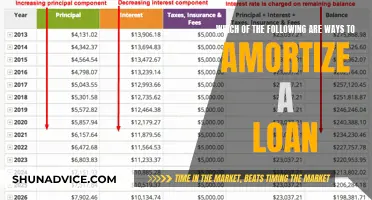
The HERO loan, short for Home Energy Renovation Opportunity, is a financing program that helps eligible homeowners fund energy-efficient home improvements. It originated from the Property Assessed Clean Energy (PACE) program, which finances energy-efficient upgrades for residential, commercial, and industrial properties. HERO loans are designed to help homeowners cover the upfront costs of projects, such as window replacements, roofing repairs, and HVAC system upgrades, without paying out of pocket. While the program offers benefits such as 100% financing of eligible projects and flexible approval criteria, there are also drawbacks, including high-interest rates and potential challenges with resale.
| Characteristics | Values |
|---|---|
| Full Form | Home Energy Renovation Opportunity |
| Origin | Property Assessed Clean Energy (PACE) program |
| Purpose | Financing energy-efficient improvements like window and door installation, solar panels, roofing, and landscaping |
| Eligibility | Home equity, household income, debt obligations, and the upgrades you want to finance |
| Repayment | Through property taxes |
| Interest Rate | Up to 9% |
| One-time Fee | 6.95% |
| Loan Term | 5-25 years |
| Availability | California, Florida, and Missouri |
What You'll Learn
- The HERO program finances energy-efficient upgrades for residential, commercial, and industrial properties
- The loan is repaid through property taxes, which can be passed on to a new property owner
- Eligibility for the HERO loan is based on home equity, income, debt, and the upgrades to be financed
- The HERO loan becomes the priority over all other loans on the home
- The HERO loan program was discontinued at the end of 2023 due to borrower nonpayment

The HERO program finances energy-efficient upgrades for residential, commercial, and industrial properties
The Home Energy Renovation Opportunity (HERO) loan program is a financing solution for eligible homeowners to implement energy-efficient upgrades to their properties. The HERO program is an offshoot of the Property Assessed Clean Energy (PACE) program, which provides financing for energy-efficient upgrades for residential, commercial, and industrial properties.
The HERO loan program is specifically tailored for residential upgrades, offering a unique approach to funding energy-efficient improvements. Unlike traditional financing options, HERO loans are based on home equity rather than credit scores, making them accessible to a wider range of homeowners. This eligibility is also influenced by factors such as household income, debt obligations, and the type of upgrades desired.
Once approved, the HERO program finances 100% of the cost of qualified energy-saving products and installations, with loan terms ranging from 5 to 25 years. This includes a variety of energy-efficient improvements, such as window and door installations, solar panels, roofing, and landscaping. The interest paid on the principal balance may offer tax benefits similar to a mortgage, although it's important to consult a local tax expert for clarification.
A notable aspect of HERO loans is their repayment structure. They are repaid through property taxes, which can provide benefits and challenges. While this method avoids upfront costs for homeowners, it also means that the HERO loan takes priority over other loans on the property in the event of default. This dynamic can create complexities when selling a property or refinancing, as the HERO loan becomes the first priority for repayment.
Becoming a Loan Signing Agent: Florida's Requirements
You may want to see also

The loan is repaid through property taxes, which can be passed on to a new property owner
The HERO (Home Energy Renovation Opportunity) loan is designed to help homeowners finance energy-efficient home improvements, such as window and door installation, solar panels, roofing, and landscaping. The loan is repaid through property taxes, which can be passed on to a new property owner in certain circumstances.
HERO loans originated from the Property Assessed Clean Energy (PACE) program, which provides financing for energy-efficient upgrades for residential, commercial, and industrial properties. Under the PACE framework, local governments provide initial funds for the installation of energy-efficient projects and renewable energy systems, and the property owner repays the loan over time.
HERO loans are specifically designed for residential upgrades and are available to homeowners in California, Florida, and Missouri. The program may expand to other states in the future. To be eligible for a HERO loan, homeowners must meet certain criteria, including having sufficient home equity, income, and debt obligations.
One unique aspect of HERO loans is that they are repaid through annual property tax payments, which are collected by the local county. This means that if a homeowner sells their property before fully repaying the loan, the remaining payments can be passed on to the new property owner. This feature of HERO loans can be advantageous for some homeowners, but it also has its drawbacks.
While the ability to transfer the loan to a new owner can provide flexibility, it also means that the loan takes precedence over any other loans on the home. In the event of financial difficulties, the government repayment takes priority, which can put homeowners in a challenging position. Additionally, lenders of prospective buyers may be reluctant to agree to a HERO loan transfer, which can create complications during the resale process.
Unitranche Loans: Understanding This Unique Debt Financing Option
You may want to see also

Eligibility for the HERO loan is based on home equity, income, debt, and the upgrades to be financed
Eligibility for the Home Energy Renovation Opportunity (HERO) loan is based on several factors, including home equity, income, debt, and the upgrades to be financed.
Home equity is a crucial factor in determining eligibility for a HERO loan. The loan amount is typically limited to a percentage of the home's value, usually up to 15%. This means that homeowners need to have sufficient equity in their homes to qualify for the loan. Additionally, approval criteria may include requirements such as being current with property taxes and mortgage payments and not having recently filed for bankruptcy.
Income and debt obligations are also considered during the eligibility assessment for a HERO loan. Lenders will evaluate the applicant's household income and existing debt commitments to determine their ability to repay the loan. This assessment helps ensure that borrowers can manage the additional financial burden of the loan payments.
The specific upgrades or improvements to be financed also play a role in determining eligibility. HERO loans are designed for energy-efficient and water-efficient upgrades, such as window and door installation, solar panels, roofing, and landscaping. These improvements must meet certain eligibility criteria, and only qualified improvements will be financed through the HERO program.
It is important to note that eligibility criteria may vary by jurisdiction, and specific state requirements may apply. Currently, the HERO loan program is available in California, Florida, and Missouri, with over 700 communities participating across these states.
Sunshine Loans: Safe or Risky Business?
You may want to see also

The HERO loan becomes the priority over all other loans on the home
The HERO (Home Energy Renovation Opportunity) loan is a form of financing that helps eligible homeowners cover energy-efficient improvements. It is designed specifically for residential upgrades and is repaid through property taxes. The loan is attached to the property, and if the property is sold before the financing is repaid, the remaining payments can be passed on to the new property owner.
HERO loans are classified as a tax lien, which means they take precedence over any other loans on the home in the event of default. This is because the loan is secured by the property, and the property owner repays the loan over time. As a result, the HERO loan becomes the priority over all other loans on the home. This can create a precarious financial situation for homeowners, as it may be difficult to find the extra money to cover the loan payments.
Lenders can be hesitant to back HERO loans due to their priority status and the potential for non-payment. Additionally, the payments often appear on the second property tax bill, further complicating the financial situation for homeowners. This can also make it difficult for homeowners to refinance their properties, as the lien on the home may be viewed unfavourably by prospective lenders.
The high priority of HERO loans can have significant implications for homeowners. In the event of financial difficulties, other loan providers, such as mortgage companies, must wait for repayment until the government is paid back in full. This dynamic underscores the cautious approach taken by lenders regarding HERO loans. Homeowners considering a HERO loan should carefully evaluate their options and ensure they fully understand the potential risks and challenges associated with this type of financing.
Becoming a Loan Signing Agent: Arizona's Requirements
You may want to see also

The HERO loan program was discontinued at the end of 2023 due to borrower nonpayment
The HERO loan program, which stands for Home Energy Renovation Opportunity, was a financing program designed to help eligible homeowners fund energy-efficient home improvements. The program originated from the Property Assessed Clean Energy (PACE) program, which provided financing for energy-efficient upgrades for residential, commercial, and industrial properties.
HERO loans were unique in that they were repaid through property taxes, with the local county collecting the payments. This had both benefits and challenges for borrowers. One advantage was that the loan could be transferred to a new property owner if the home was sold before the loan was fully repaid, provided the buyer and their lender agreed. However, this also meant that the HERO loan took precedence over any other loans on the home, including the mortgage, which made lenders hesitant to approve HERO mortgages.
Eligibility for HERO loans was based on factors such as home equity, household income, debt obligations, and the type of upgrades being financed. The program was available in California, Florida, and Missouri, with the potential to expand to other states. If approved, borrowers could receive 100% financing for qualified improvements, up to 15% of the home's value. The loans typically had terms of 5 to 25 years, with interest rates of up to 9%.
Despite the benefits of the HERO loan program, it was discontinued at the end of 2023 due to issues with borrower nonpayment. This left many homeowners searching for alternative financing options to fund their energy-efficient renovations. Some alternatives to HERO loans include home equity loans, home equity lines of credit (HELOCs), and the Section 504 Home Repair program for low-income homeowners.
EZ Cash Loan: Quick, Easy, and Secure Lending
You may want to see also
Frequently asked questions
HERO stands for Home Energy Renovation Opportunity. It is a loan program that helps eligible homeowners finance energy-efficient improvements like window and door installation, solar panels, roofing, and landscaping.
The HERO loan program finances 100% of the cost of purchasing and installing eligible energy-saving products. The repayment of the financing is included in the property tax bills.
Eligibility for a HERO loan is based on factors including home equity, household income, debt obligations, and the upgrades you want to finance. Only energy-efficient, water-efficient, or hurricane protection upgrades may qualify for the HERO program.
A HERO loan helps eligible homeowners cover the upfront costs of energy-efficient home improvements without having to pay out of pocket. It also provides tax benefits similar to a mortgage.
HERO loan payments are added to property taxes and take precedence over any other loans on the home in case of default. The interest rates can be quite high, up to 9%. The HERO loan program was also discontinued at the end of 2023 due to borrower non-payment.







